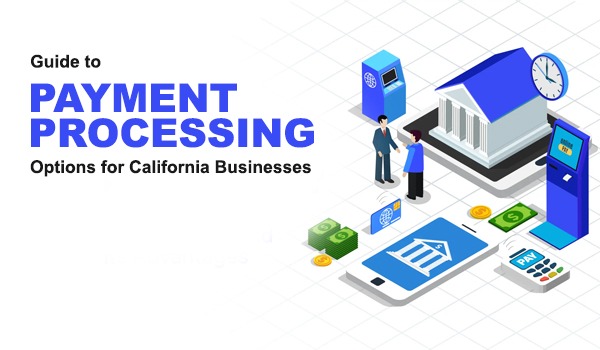
Introduction
In modern business, the ability to accept credit card payments is essential for success. However, navigating the landscape of credit card processing fees can be complex and confusing. For businesses in California, understanding these fees is crucial to managing costs effectively and ensuring a smooth payment experience for customers. This guide will break down the types of credit card processing fees, how they work, and strategies for minimizing costs.
What Are Credit Card Processing Fees?
Credit card processing fees are charges incurred whenever a business accepts a credit card payment. These fees are typically deducted from the total transaction amount before the business receives its funds. Understanding these fees is vital for business owners, as they can impact profit margins significantly.
Key Components of Credit Card Processing Fees
- Merchant Account Fees: These are fees charged by the payment processor for providing a merchant account, which is essential for accepting credit card payments.
- Transaction Fees: Charged each time a transaction is processed, these fees can vary based on the payment processor and the type of card used.
- Interchange Fees: Set by the card networks (like Visa and Mastercard), these fees go to the issuing bank of the credit card used for the transaction. Interchange fees are usually composed of a percentage of the transaction value along with a small fixed fee.
- Assessment Fees: Charged by the credit card networks, these fees are a small percentage of the transaction amount, often calculated every month.
- Monthly Fees: Some processors charge a recurring monthly fee for maintaining the merchant account. This fee can include statement fees, account maintenance fees, or subscription fees for advanced services.
- Chargeback Fees: If a customer disputes a charge and initiates a chargeback, businesses may incur additional fees from their payment processor.
- Payment Gateway Fees: For online transactions, businesses may need a payment gateway to process payments securely, which can come with its own set of fees.
Types of Fee Structures
Credit card processing fees can be structured in different ways. Understanding these structures can help businesses choose the right payment processor.
- Flat-Rate Pricing: A straightforward model where the processor charges a fixed percentage per transaction, regardless of card type. This model is ideal for small businesses with predictable sales volumes.
- Tiered Pricing: Fees are divided into categories (qualified, mid-qualified, and non-qualified) based on the type of card used and the transaction method. This model can be more complex and less transparent.
- Interchange-Plus Pricing: This structure separates the interchange fees and processor markup, providing clearer insights into how fees are calculated. It’s often considered the most transparent option.
- Subscription-Based Pricing: Some processors offer a monthly subscription fee that includes a lower transaction fee. This model can benefit businesses with high sales volumes.
Factors Influencing Credit Card Processing Fees
Several factors can affect the amount of credit card processing fees a business incurs:
- Type of Card: Premium cards (like rewards or corporate cards) typically have higher interchange fees than standard consumer cards.
- Transaction Volume: Businesses processing higher volumes may negotiate lower rates with their payment processor.
- Business Type: Different industries may have varying fee structures based on perceived risk. For example, e-commerce businesses may face higher fees due to increased fraud risk.
- Method of Payment: In-person transactions generally incur lower fees compared to online or keyed-in transactions, which can be riskier for processors.
- Location: California’s diverse market can also influence fees, as local regulations and competition among processors may affect pricing.
Typical Fees for California Businesses
While fees can vary widely based on the payment processor and business type, here are some common ranges for California businesses:
- Merchant Account Fees: $0 to $25 per month.
- Transaction Fees: 1.5% to 3.5% per transaction.
- Interchange Fees: Typically 1.5% to 3.5% of the transaction amount, plus a fixed fee (around $0.10 to $0.30).
- Assessment Fees: Generally around 0.1% to 0.15% of the transaction amount.
- Chargeback Fees: Can range from $15 to $50 per chargeback.
These figures can fluctuate based on the factors previously mentioned, and business owners need to review their processing agreements for specific rates.
How to Minimize Credit Card Processing Fees
Understanding and managing credit card processing fees can help California businesses maximize their profits. Here are some strategies to consider:
Choose the Right Processor
Research and compare different credit card processors to find one that aligns with your business model. Look for transparent pricing structures, positive reviews, and responsive customer service. If your business has a high transaction volume, consider processors that offer interchange-plus pricing to ensure you’re getting the best rates.
Negotiate Fees
If you have been in business for a while and have a strong transaction history, don’t hesitate to negotiate fees with your processor. Many companies are willing to lower rates to retain good customers.
Understand Your Processing Statements
Regularly review your processing statements to understand the fees being charged. Familiarize yourself with the terminology and look for discrepancies. If something seems off, contact your processor for clarification.
Encourage Customers to Use Lower-Cost Payment Methods
Incentivizing customers to use lower-cost payment methods, such as debit cards, can help reduce processing fees. For example, you could offer discounts for cash payments or promote the use of mobile wallets that may incur lower fees.
Utilize Technology Wisely
Invest in POS systems or payment gateways that streamline the payment process and reduce the likelihood of errors that can lead to chargebacks. A well-integrated system can also help lower processing fees by reducing manual entry errors.
Monitor Chargebacks
Implementing strategies to minimize chargebacks can help avoid additional fees. This might include clear refund policies, excellent customer service, and proper transaction documentation to protect against disputes.
Consider Subscription Models for High Volume Sales
If your business processes a high volume of transactions, look into payment processors that offer subscription models. These models can significantly reduce transaction fees over time.
Stay Informed About Industry Changes
Credit card processing fees can change based on industry trends, regulatory updates, and shifts in card network policies. Stay informed to adjust your strategy as needed.
The Importance of Transparency
Transparency is crucial in the relationship between a business and its payment processor. It’s vital to ensure you fully understand the fees associated with your merchant account. A reputable processor should be willing to explain their fee structure in detail and answer any questions you may have.
Choosing a Transparent Provider
When selecting a provider, look for the following signs of transparency:
- Clear Fee Structure: The provider should present a straightforward breakdown of all fees, including transaction fees, monthly fees, and any additional costs.
- No Hidden Fees: Be cautious of processors that have complex pricing structures with many additional fees that may not be immediately apparent.
- Solid Customer Support: A responsive customer support team can help clarify any confusion and assist with fee-related inquiries.
Conclusion
Understanding credit card processing fees is essential for California businesses looking to thrive in a competitive marketplace. By familiarizing yourself with the different types of fees, factors influencing them, and strategies for minimizing costs, you can optimize your payment processing and improve your bottom line.
Choosing the right payment processor, negotiating fees, and monitoring your processing statements are vital steps toward financial health. With a keen awareness of how credit card processing works, you can make informed decisions that benefit your business and enhance customer satisfaction. Ultimately, a well-managed payment process not only helps in saving costs but also fosters trust and loyalty among customers, paving the way for long-term success.









